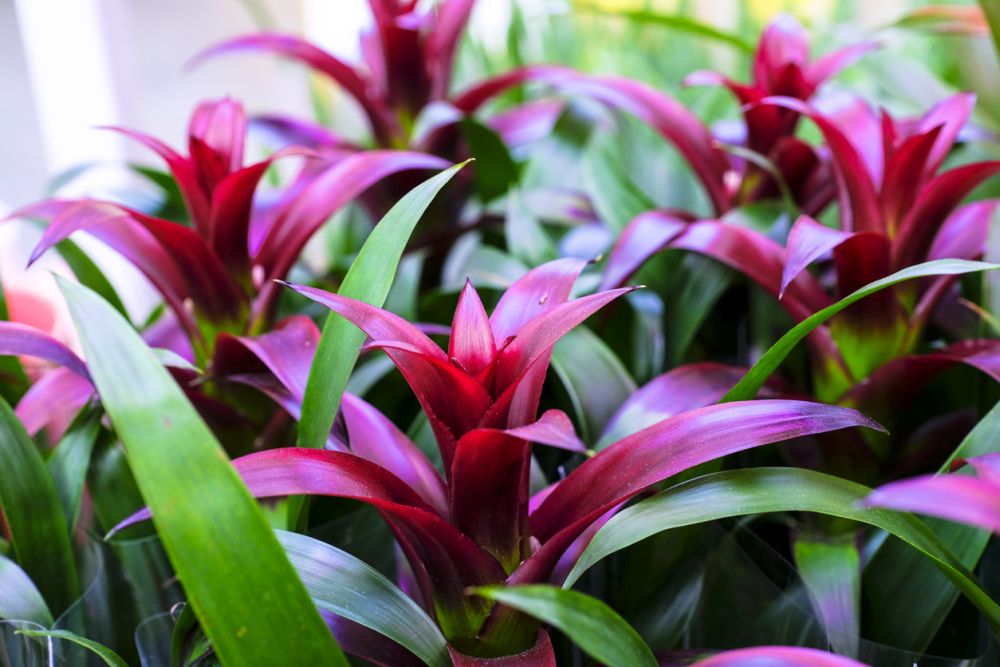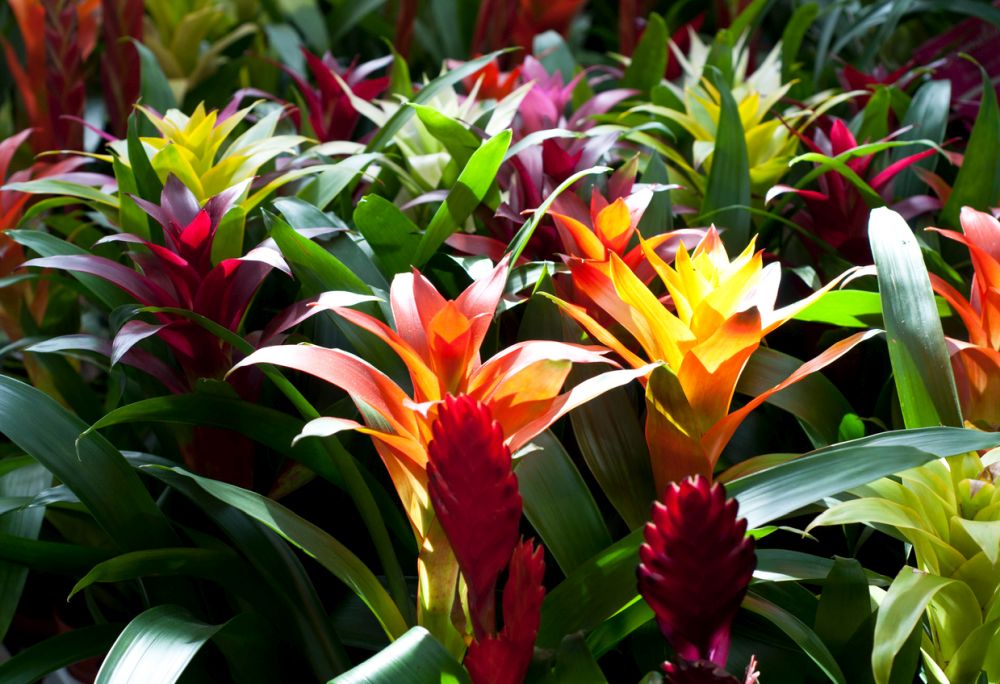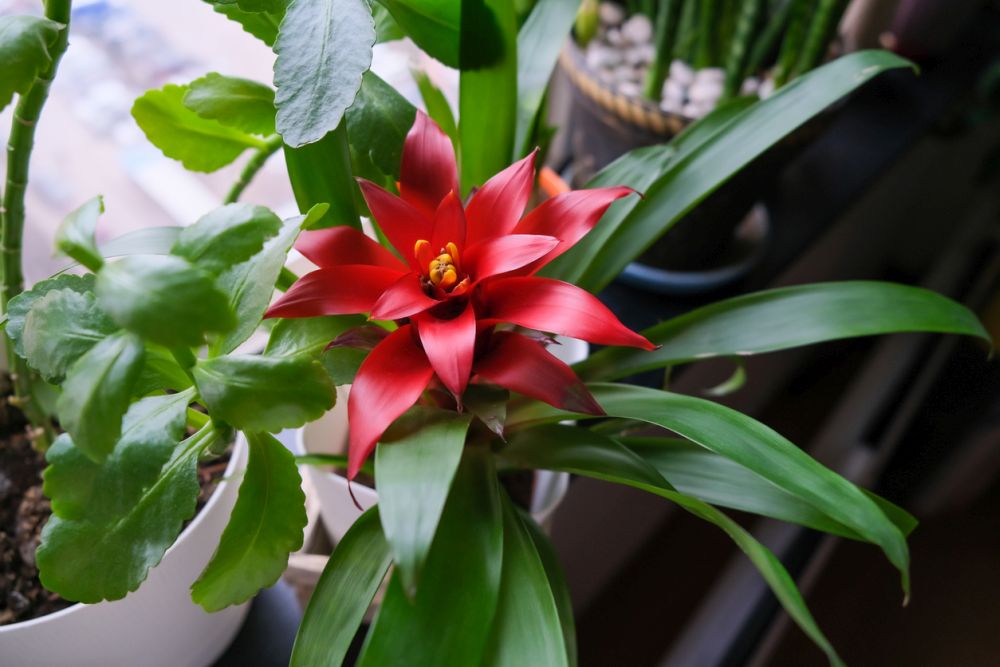Guzmania Plants – How To Grow And Care For Guzmania Bromeliads
The sun-kissed Guzmania is a horticultural wonder any way you look at it. Although mainly a tropical plant, it is still easy for you to grow it as a houseplant if you don’t have the right weather for it. The Guzmania rarely blooms, but who needs flowers when the exotic plant has colorful and appealing leaves. That’s not to say that you might not get it to bloom in your garden or house. There have been mixed results regarding its flowering habits.
One thing is for sure, whatever Guzmania variety you grow, if it flowers once, that would be the first and last time it will bloom throughout its life. Despite the lack of flowering and their notoriously short lifespan, Guzmania bromeliads are excellent additions to your tropical garden. Read on to find out how to grow and care for these flamboyant epiphytes.
Guzmania at a Glance
An epiphyte is a plant that attaches itself to the surface of another plant. And a Guzmania bromeliad is a good example of an epiphyte. It has roots, but it doesn’t use them to absorb moisture and nutrients. Instead, the roots of the plant are there to keep it anchored to the surface of the tree, rusty pipe, or moss-covered log it happens to grow on. However, some species of this plant grow in soil as well.
A native of the American tropics and subtropics, the Guzmania has more than 1,200 species. As you can imagine, the size of the mature plant differs widely based on the species you grow. Some are dwarfish and only reach a few inches high, while others grow to be veritable horticultural giants.
It is more suited for USDA hardiness zones 10 all the way to 12. However, it’s easy to get it to adapt to colder temperatures as long as the winters are not freezing in your zone. And if you have trouble growing it in the garden, you can always grow it indoors. As long as you provide adequate temperature and humidity levels, the Guzmania will thrive wherever you plant it.
The bracts of the Guzmania are the main reason people grow it as an ornamental plant. The new leaves grow out of the center of the plant like a funnel. As for the bracts, they range in color from orange to yellow, brown, purple, or red.
Guzmania Varieties
Of course, not all of those 1,200 species of Guzmanias are ready to grow in your garden, greenhouse, or sunroom. Due to the complex nature of the lifecycle of the Guzmania, only a handful of varieties are recommended as houseplants. In the wild, some species become a self-contained ecosystem in their own right. They store water between their leaves and allow mold, frogs, and even birds to nest there. Since that is the last thing most gardeners would want from a houseplant, we’ll focus on the urban-friendly Guzmania varieties.
- Guzmania lingulata: Also known as the Scarlet Star. One of the most popular Guzmanias that grow both outdoors and as houseplants. The green leaves grow out to form a rosette out of which red or pink bracts make up the body of the flower. In the center of the bracts, small white flowers form a disk-like shape. Overall, the complex structure of this species is the secret behind its popularity and general appeal.
- Guzmania musaica: Another species with peculiar tubular flowers. But since the flowers are rare to bloom indoors, your main concern is with the leathery leaves of this perennial. The leaves grow to about 20 inches long out of a rosette where the tips of the new leaves overlap. The mature plant ends up looking like a funnel. The flowers, if they appear, vary in color between gold, white, and orange.
- Neoregelia: Not exactly a Guzmania but a bromeliad nonetheless. Many of the houseplant bromeliads you’ll see growing in your area belong to this classification. The bracts are colorful and come in different shades of purple and pink. They have a compact size that varies by species. The largest bromeliad in this genus grows to about 40 inches in diameter.
- Vriesea: Unlike other bromeliads, these species often have variegated leaves. Often the leaves themselves are the center of attention, while the feather-like blooms come as an afterthought. Some cultivars, including “fireworks,” offer an explosion of colors when the flowers finally open up.
How to Grow a Guzmania
If you live in zones 10, 11, or 12, you can go ahead and plant the Guzmania pud directly in your garden. You have the right light conditions and high humidity levels to ensure the success of the plant. If like the rest of us, you live in colder or more temperate zones, then you can grow it as a houseplant. Here’s how to start the Guzmania from a pup in easy steps.
- Find a mature Guzmania plant with pups growing around the base.
- Choose a pup that has already developed a few roots, and the central funnel is starting to take shape.
- Use a sterilized blade to cut the pup at the base where it meets the parent plant.
- Prepare a small terracotta pot with plenty of drainage holes at the bottom.
- Fill the pot with a bromeliad potting mix that is loose and well-drained.
- Sprinkle the potting mix with water to make it damp.
- Dig a hole in the middle and place the pup in the hole. Fill back with the potting mix.
- Keep the pot in a sunny spot that gets 6 hours of sun every day.
- Fill the funnel with water to keep the plant sustained until leaves start to grow.
Guzmania Care
Although Guzmania bromeliads have a short lifespan and tend to die after flowering, that’s not the end of your endeavors. Before it dies, the parent Guzmania will shoot out a few pups around the base. These babies will feed on the dying plant until they grow into full-fledged Guzmania of their own. In other words, you won’t have to repot the plant or propagate since it does it automatically. You’ll just have to do some cleaning up when the parent plant dies and remove any extra babies you have no interest in growing.
Soil
It’s not recommended to use your regular potting mix or even soil from the garden to start Guzmania pups. As we mentioned, the roots of the plants are more of tethering ropes than functioning roots. So if you grow the plant in heavy wet soil, the roots will rot, and the plant will wither and die. Instead, you can either plant the Guzmania in a special potting mix for bromeliads, or you can make one yourself. You’ll need vermiculite, bark, and peat moss. Mix them in equal portions and fill your pot with it. Some people use coco coir instead of peat moss since it’s a more sustainable and readily available alternative.
Light
As much as possible, try to provide natural light for the Guzmania. It thrives in dappled light or partial shade and is happiest when it gets between 6 to 8 hours of sunlight per day. However, keep in mind that direct exposure to the hot sun can damage the bracts and burn the tips of the leaves. So if the summer sun becomes too hot, move the pots to a shady area. For Guzmania plants growing in the garden, install an umbrella near the plants to protect them against the afternoon sun. If daylight hours are short in your zone, then you can use grow lights as a replacement for natural light. Keep the lights on about 16 hours a day to avoid light deprivation problems.
Water
We mentioned at the beginning of this article how Guzmania plants are unique in many ways. And the watering needs of this plant are one of those unique and unparalleled peculiarities that you’ll rarely meet in another plant outside of the bromeliad genus. The funnel shape of the plant acts as a water storage unit. In the wild, Guzmania bromeliads wait for rainfall to fill up this funnel. That’s how the plant sustains itself in terms of moisture and nutrients. So when watering the Guzmania, that’s exactly what you’ll do. You’ll fill up the funnel to about one-quarter of its size. Of course, stagnant water is fertile ground for bacteria and insects to breed, so you’ll need to refresh this water storage once every 4 to 6 weeks. In zones below 10, you need to reduce the amount of water in the funnel to avoid leaf rot. It’s recommended that you let the funnel dry out for a couple of days before replenishing the water again.
Fertilizer
Since neither the roots nor the soil offers much sustenance to Guzmania bromeliads, it falls on you to provide the nutrients they need. In the Amazon Rainforest, Guzmania plants develop an efficient ecosystem inside their funnel and feed on the organic matter that drops from other plants hovering over its funnel. This gives you a clue as to how to feed this exotic plant. You can use an organic compost tea or other mild liquid fertilizer and sprinkle it on the leaves and make sure it drops into the funnel full of water. As long as the fertilizer is diluted, you won’t have any problems with leaf burning.
Pests and Diseases
If you treat Guzmania bromeliads as any other plant and water the soil instead of the funnel in the middle, you could expedite the demise of the plant as the roots rot and the leaves wither and die. Another problem you might have if you use water rich in minerals. The mineral deposits will cause spots to appear on the leaves and the base of the plant. You should use filtered or demineralized water instead.
The wrong type of soil can also lead to the spread of rot around the base of the plant. You should use a bromeliad-specific potting mix or make your own soilless mix, as we have detailed above.


